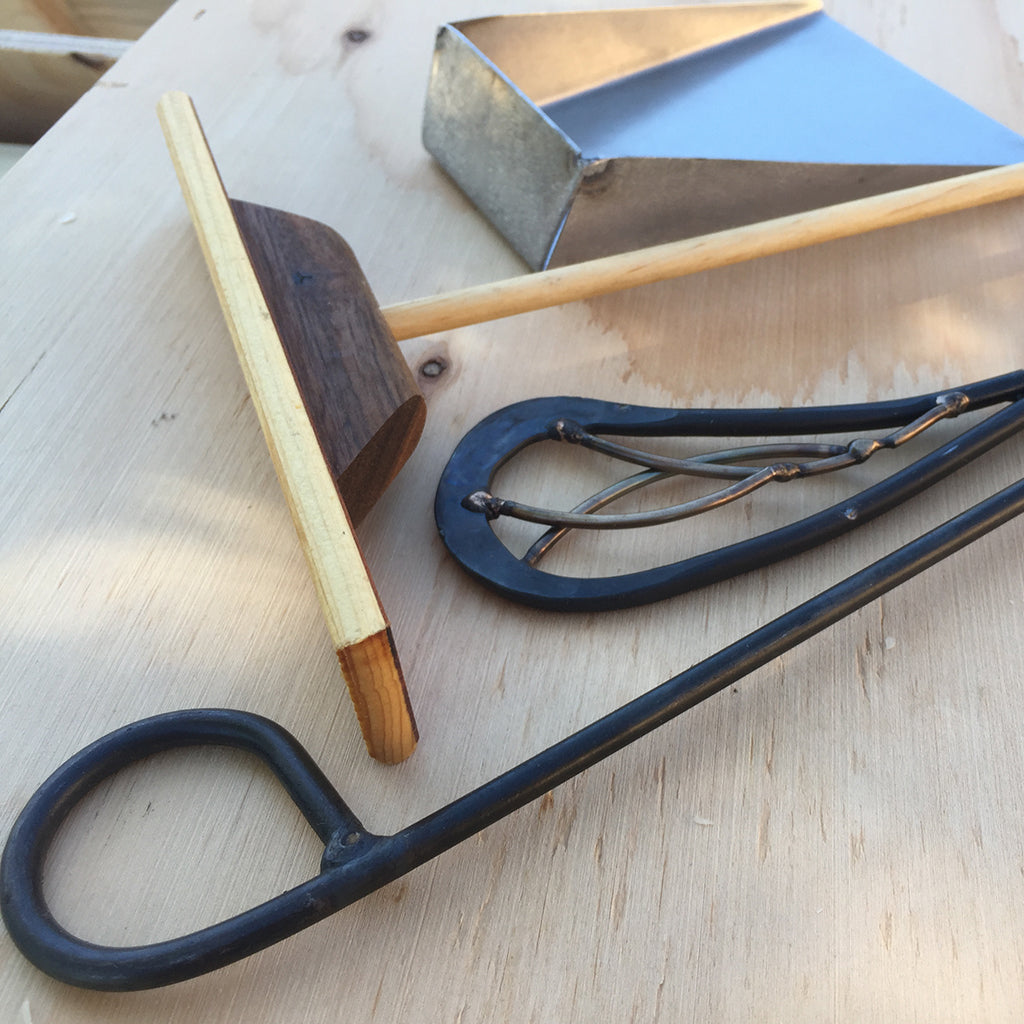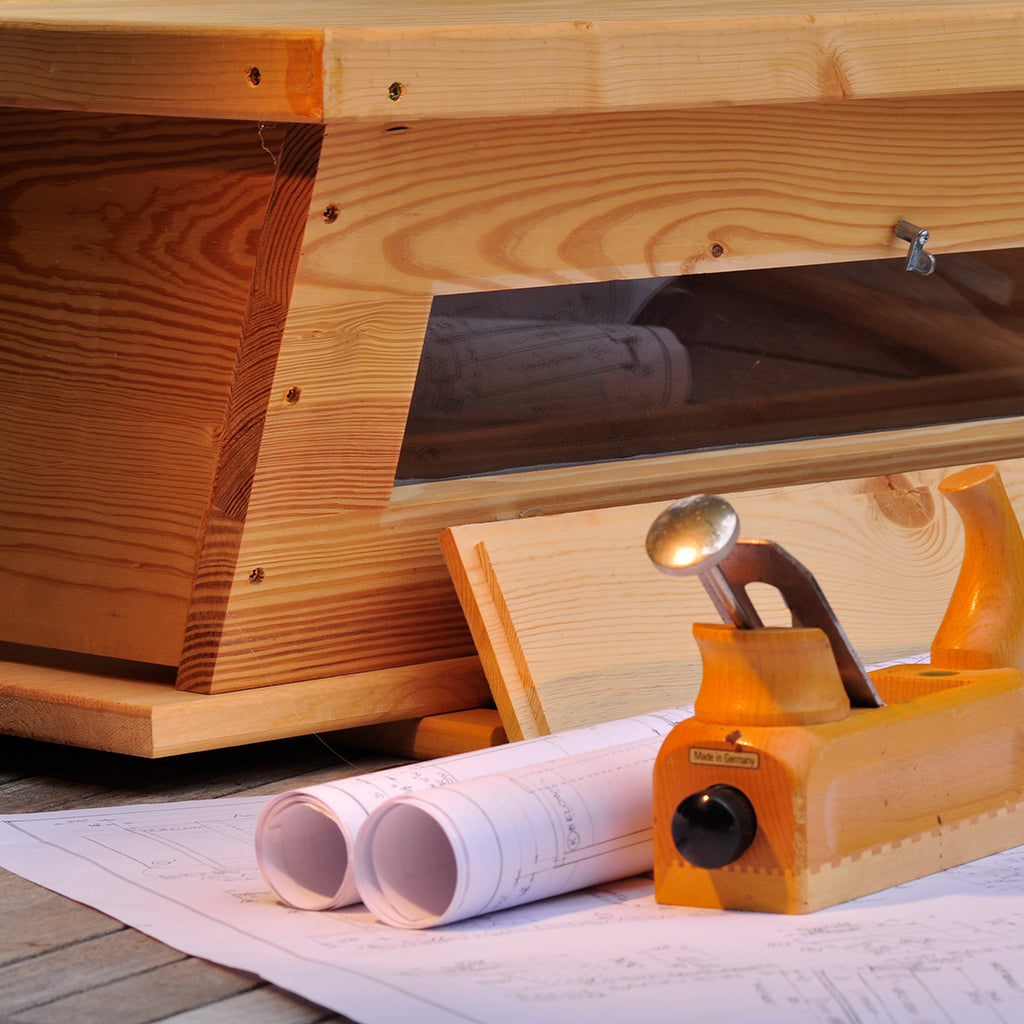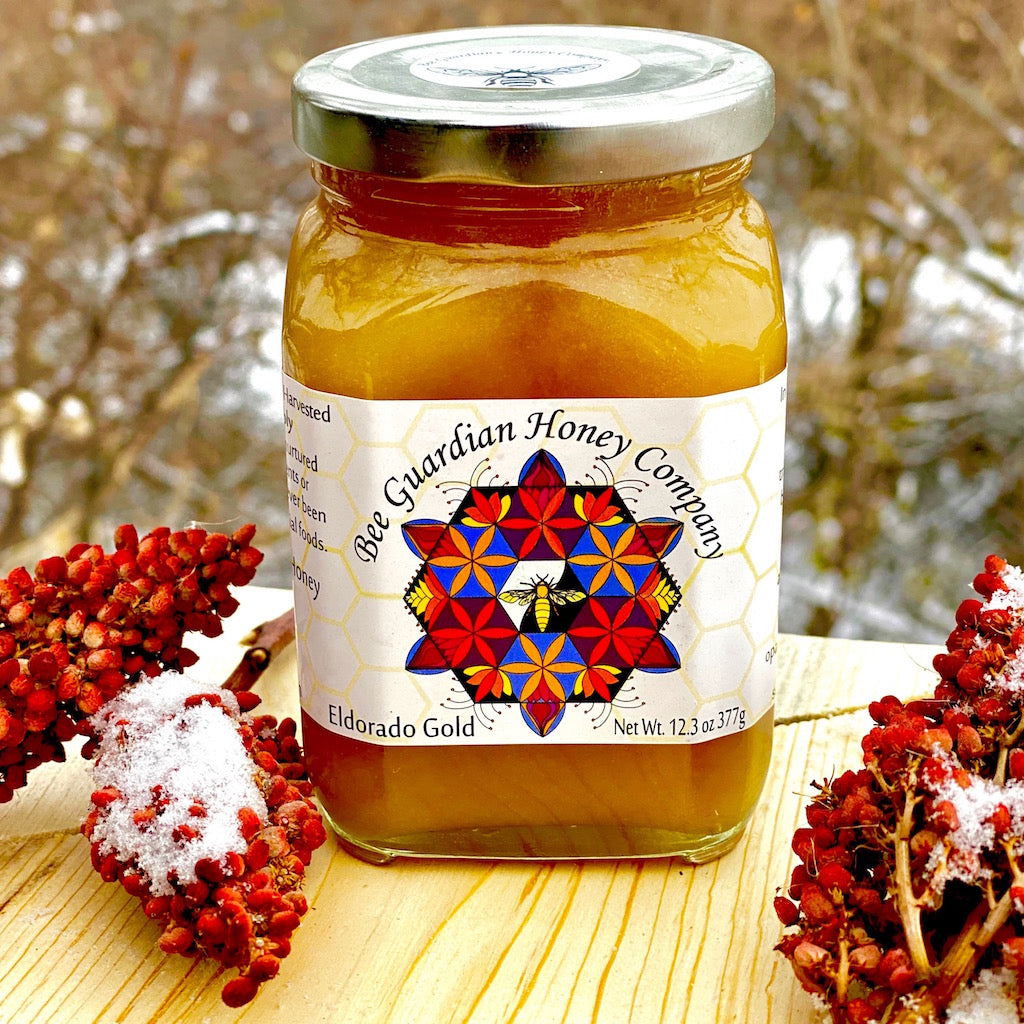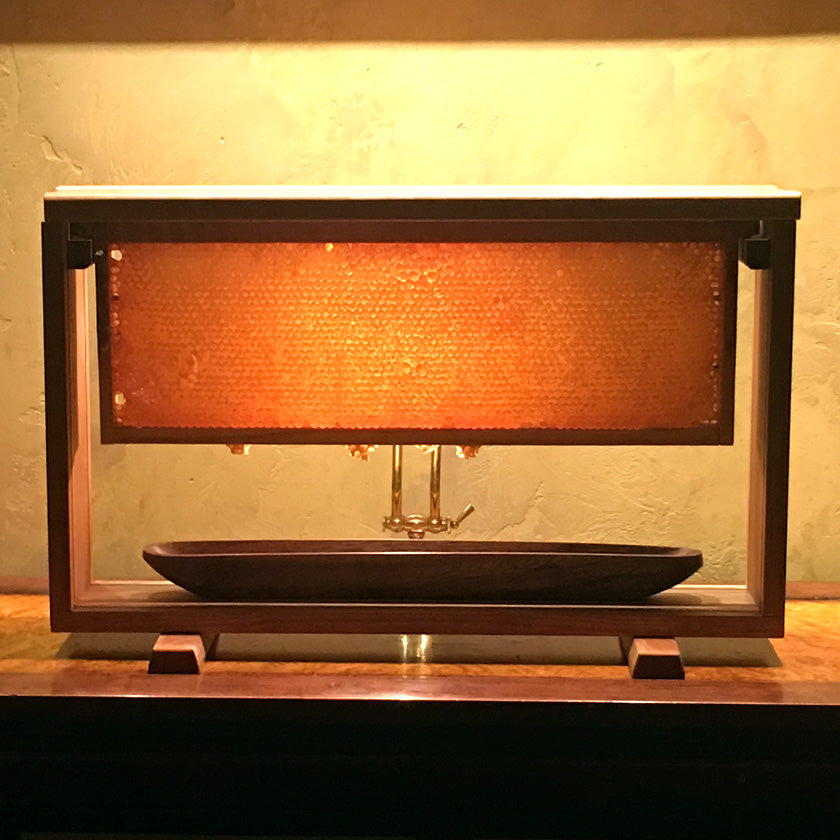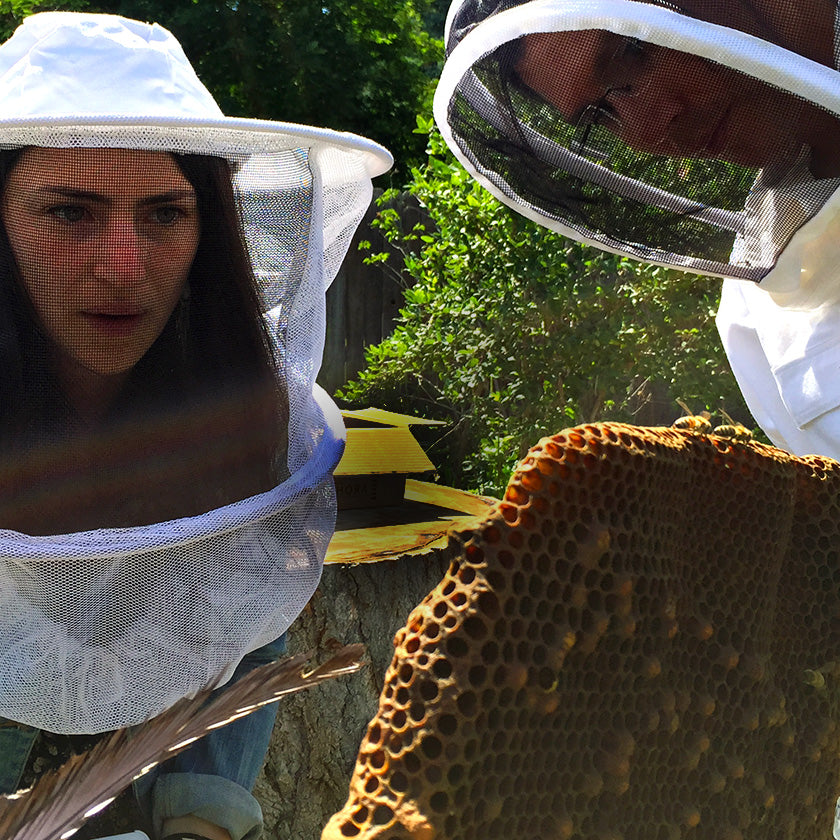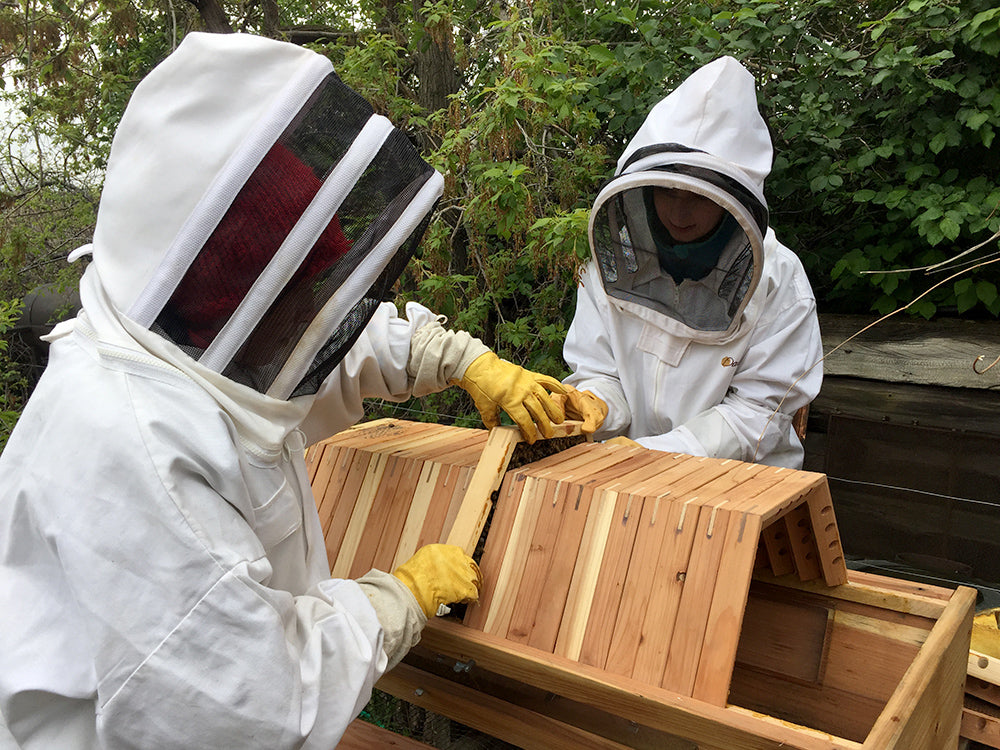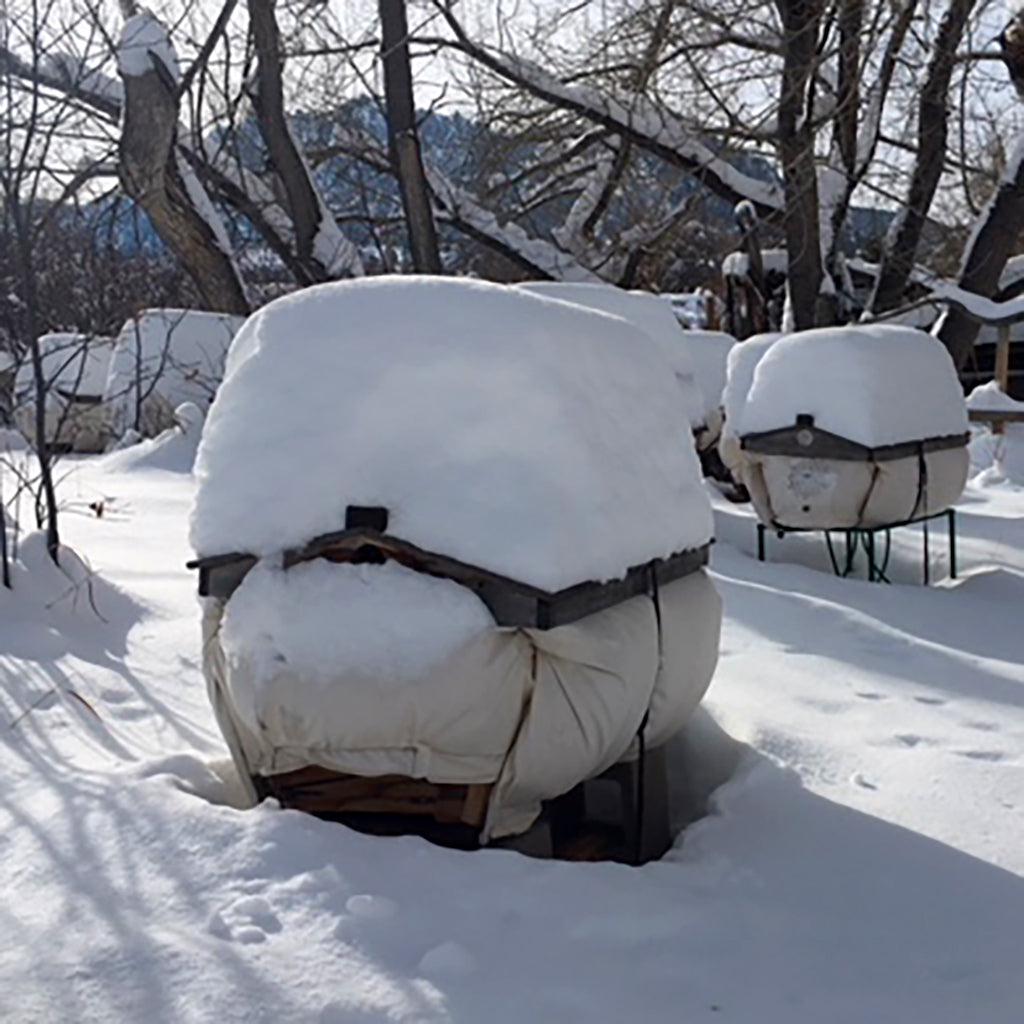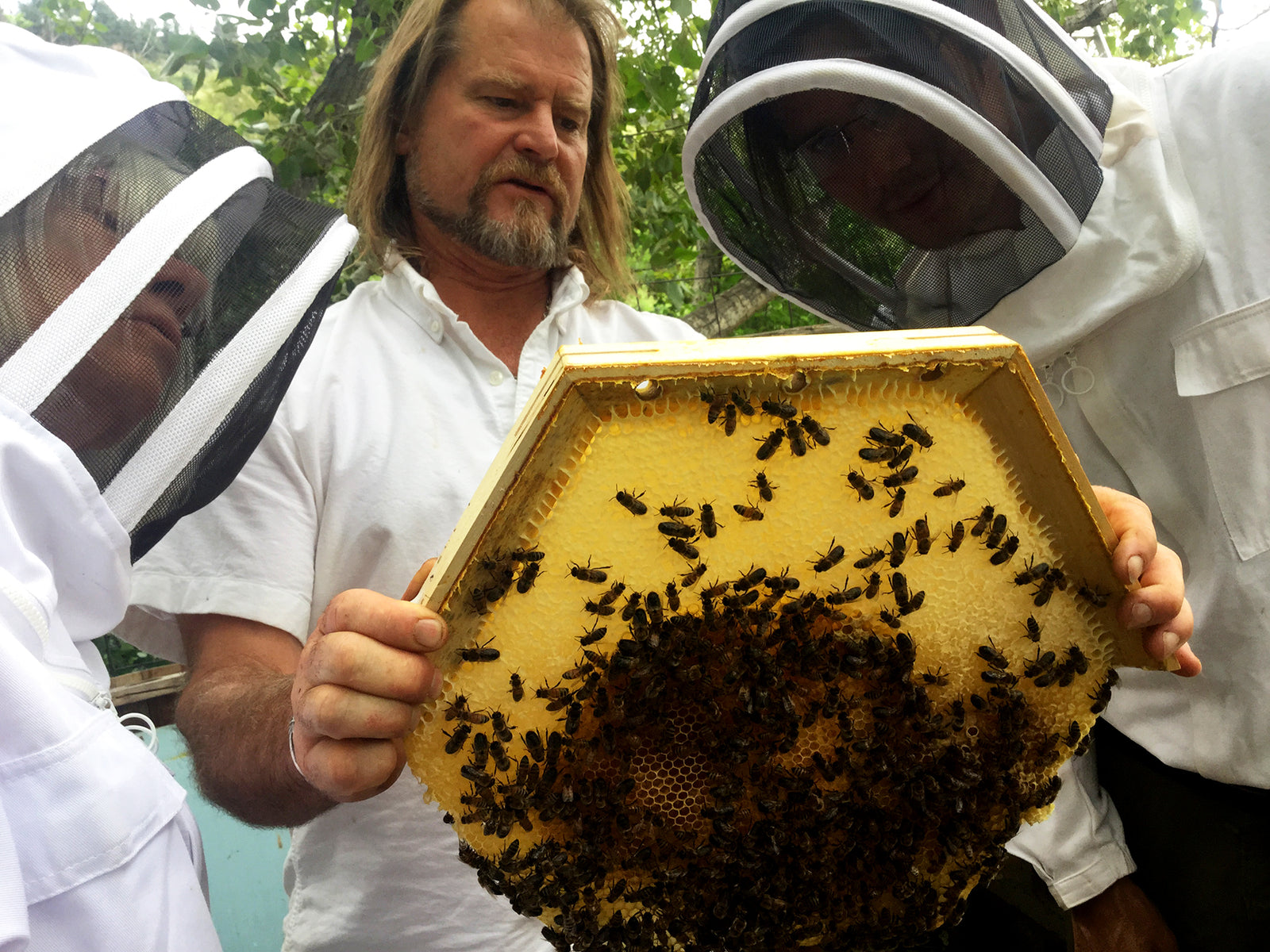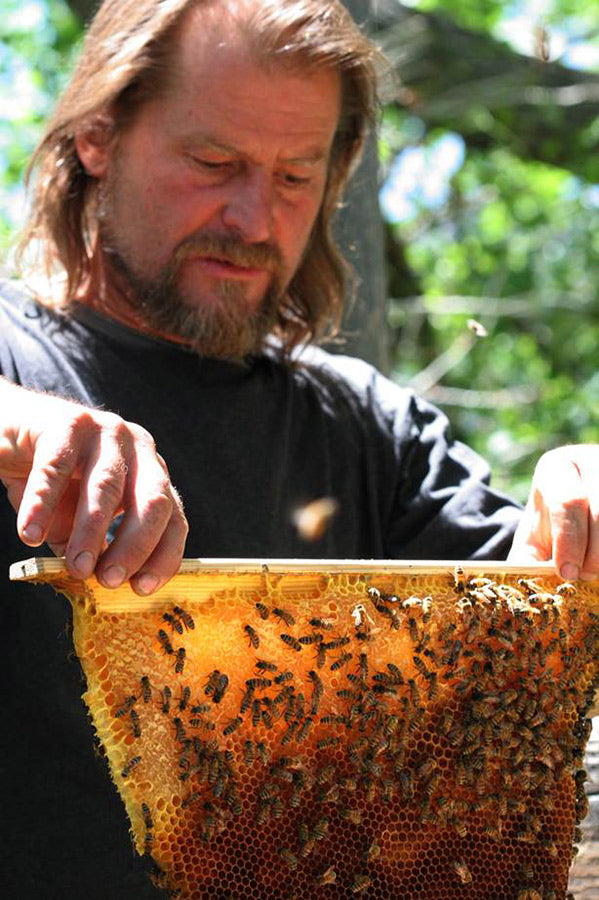Yesterday the honeybees descended on the blueleaf honeysuckle. Today the aroma of this amazing shrub burgeoned as the sun warmed the morning. Also known as blue velvet honeysuckle, or honey rose honeysuckle, it is amazing to behold for a few weeks a year. The rest of the time, it’s quite nice, too. But this week and next, Lonicera korolkowii is in its glory, and the bees have exactly four yards to fly from their hive to their feast. The bush is alive with bees.
And I’m not afraid anymore. After a visit from the bee doctor last month, we’re all getting along smoothly. I’d been anxiously awaiting the arrival of the bee doctor for eight months, three of which I’d spent back east and the previous three here in a deep freeze. One missed message or weather delay after another led me to arrive home just two days before his expected visit.
He pulled up about 4:30 that afternoon. While I went inside to put on my bee suit, Corwin Bell walked around the hive. “They’re speaking a language I don’t understand yet,” he said, when I joined him outside. “They’re very aware, very wild.”
I told him they’d come out of a cottonwood known to have had a hive in it for at least twenty years. “That explains it,” he said, “they’ve got a very old language.”
He spent the next hour slowly moving into the bees’ space, gradually getting on their wavelength. He circled the hive a few more times before settling down to one side of the door and watching for a long time, as bees came and went. He gently waved his hand a few inches in front of the door to determine the level of defensiveness of the hive, and a few guard bees flew out to inspect it. The level of the buzz ramped up for a few seconds, then settled down to what he called “a nice sense-of-self hum.”
He held his hand in front of the doorway and swept it backwards away from the door into the crowd of bees approaching the landing platform. “Wow!” he said. “Look at that! They’re very aware.” As his hand swept back into their path they backed away from it. Not a single bee crashed into his hand. “Most bees don’t move that fast,” he said, “they crash right into my hand. These guys are aware and agile.”
After awhile of making their acquaintance this way, he moved his face close to the door and blew gently into it, again to gauge their reaction to his exhalations. Bees don’t like carbon dioxide, a big huff of it into their hive signals a predatory invader like a bear. But they didn’t react badly to his breath. And then he shared with me a mystical yet scientifically sound technique for bonding with the bees, to let them know that I am one with them, that we are all one.
Once he had literally gotten himself onto the same energetic plane as the beehive, we opened it up. Very gently we pried a bar loose from the hive and lifted out a perfect wedge of honeycomb. He spoke little, putting all his energy into reading and responding to the bees. He called my attention to the shifting energy of the buzz of the hive, high-pitched, louder, softer with their mood.
We went through two spray bottles full of water, misting the bees if they got aggressive, pausing in our ministrations to let them settle back down if they got too agitated. As he worked with each comb before removing it, he used a small wooden bee-herder to encourage the bees to move down the comb to the floor of the hive
“Oh,” he said, “they’re running!” Some of those on the floor of the hive were running toward the front. “Don’t get wigged out,” he went on, “but that’s something Africanized bees do, they run like that.” Just one more example of their wildness, he assured me, not that they had gotten Africanized.
Read Full Article


